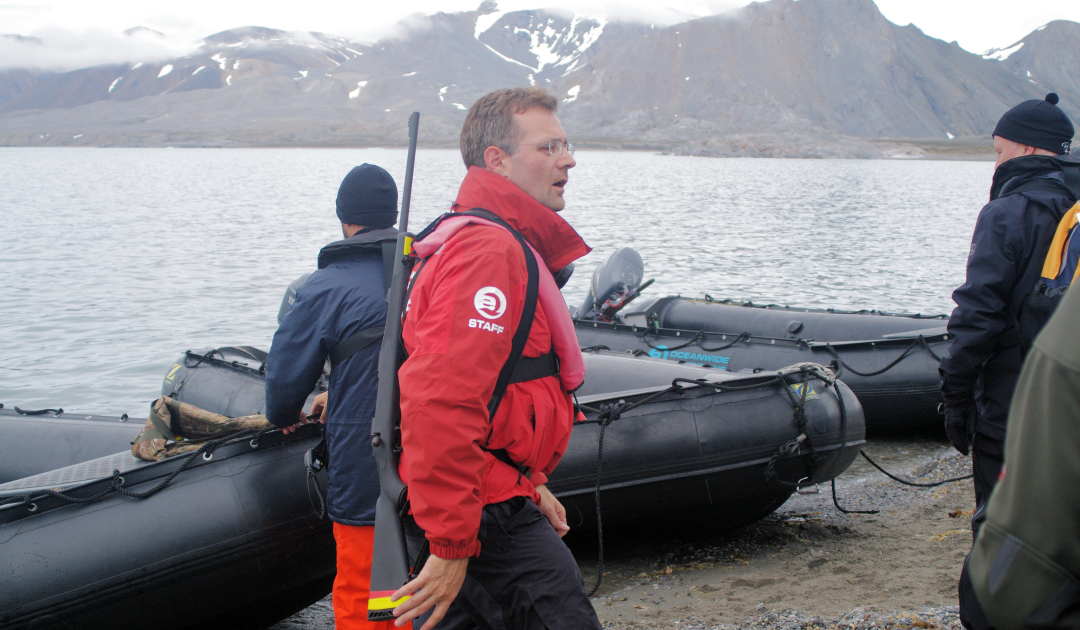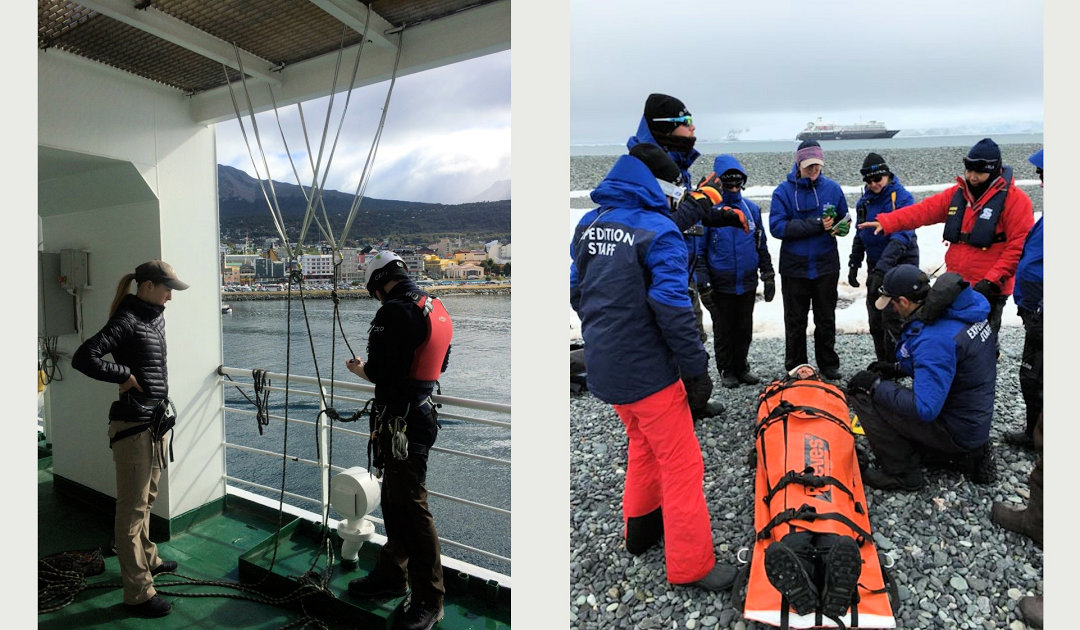
What makes a visit to the polar regions a highlight for tourists are, in addition to a well-equipped ship, those women and men who, as polar guides, provide a lot of interesting information and, above all, safety during the trip. Whether on land, in a Zodiac or on board of a ship, polar guides are always there to answer questions, explain everything in detail and make sure that nothing happens to either the polar environment or the guests. In order for these diverse tasks to be carried out professionally in the future, numerous competencies are necessary, which should meet a certain standard. And this is what the Polar Tourism Guide Association wants to ensure.
In recent decades, polar tourism has grown from a niche product for a few adventurous travelers to a huge and (until the pandemic, at least) lucrative branch of the travel industry. Tens of thousands of tourists annually now visit the home regions of polar bears and walruses in the north and those of penguins in the south. And ever since the first ships brought guests to these regions, experts had been along for the ride. As guides, they were to pass on their knowledge to the passengers, thus taking the experience beyond impressions of animals and landscapes. In addition, they were also supposed to ensure a certain level of safety for the visitors and the regions, especially during shore excursions. As time went on, the number of guests willing to travel increased, and with it the need for guides. This was hardly a problem, because volunteers were plentiful. But what didn’t exist was a professional structure or framework that would have created a catalog of competencies, and there was also no procedure that could have ensured a minimum quality standard for these competencies.

The Polar Tourism Guides Association PTGA has now stepped into this gap. The association, founded in 2017, sees its mission as establishing an “internationally recognized process for performance testing and qualification of guides for all platforms of polar guiding,” as the association writes on its website. The goals to achieve that mission, multifaceted and ranging from promoting professional and performance-tested operating standards, to creating polar qualifications and their frameworks, to minimum standards for key qualifications and their assessment, to developing polar guiding into a recognized professional genre. Graham Charles, president of PTGA and a long-time polar guide himself, tells PolarJournal, “We aim to achieve our mission and goals by being an accessible and independent Professional Industry Association which can provide the most cost effective, designed for purpose workplace standards across the polar guiding and tourism industry regardless of company, organization, or country.”


What we can say is that PTGA offers the most structured, fully transparent and complete set of competency tests available to the industry by far.
Graham Charles, President PTGA
The PTGA consists of a seven-member board that gathers some of the most experienced experts in polar guiding. Each and every one of them brings a valuable wealth of experience, knowledge and training that is important for the implementation of the PTGA’s goals and mission. This has also allowed PTGA to benefit from the experiences of other guide programs. “There are many other national guide programs in other areas around the world, and parts of those programs can be, and are, useful building blocks for a polar guide,” explains Graham Charles. These building blocks provide the skills that a professional polar guide should have. On the other side, however, is quality control, which Charles says is very subjective because there is no data or study on it. Furthermore, especially in the Arctic, national differences in guide programs are also a hurdle in this regard. ” It is ludicrous to expect international guides to have different sovereign qualifications across the northern polar realm when they are doing exactly the same job.,” Graham Charles continues. ” Our competency system is built for polar guiding anywhere in the polar regions north and south. What we can say is that PTGA offers the most structured, fully transparent and complete set of competency tests available to the industry by far. These are supported by an ISO accreditation as proof of the efficacy in our program and systems.”

PTGA is not a training organization. We don’t provide actual guide training except to train Assessors who want to be part of the program
Graham Charles, President PTGA
Basically, the PTGA is available for any person and any organization or operating company to join. The basic requirement is that they share the goals and mission of professionalizing polar guides. Now the association has over 530 members and solid support among the operators and among related organizations. But this hasn’t been always the case. In the beginning, the idea of a professional and performance-tested guide program was met with skepticism and even outright rejection, especially among the operators. They feared that the PTGA would become a trade union and saw endless wage negotiations and threats of strikes and an increase in the cost of the products due to additional training of the guides by the PTGA. But the association wants no part of that. “PTGA is not a training organization. We don’t provide actual guide training except to train Assessors who want to be part of the program” Graham Charles points out. “Training staff is the job of the operators, the companies or training institutes. We are the test at the end of the training.” And that seems to be working, as more and more people and operators are turning to professional training for polar guides and working with PTGA to make standards and assessment of skills, knowledge and judgment consistent. This enables the very companies that are grouped into the IAATO (for the Antarctic) and AECO (for the Arctic) associations, with whom the PTGA works proactively, to guarantee that the best possible trained guides are available to guests for any activity on land or water. This ensures the safety of guests and helps protect wildlife and the fragile polar environment and is the tacit foundation on which guests can enjoy every part of their polar experience in this magical, unique world.
Dr. Michael Wenger, PolarJournal
Link to the website of Polar Tourism Guide Association





